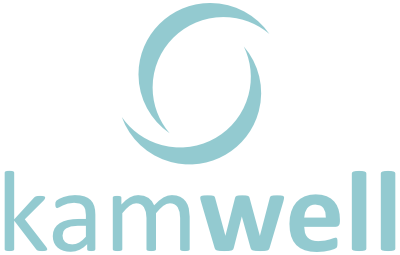
- BLOG
- Communication
Digital disagreements: Restoring harmony and wellbeing
An eye for an eye will only make the whole world blind ~ Gandhi
The pandemic has fostered an incredible sense of community and sympathy in the workplace. However, while we have made great strides in adapting, this does not mean workplace conflict has been paused. In fact, as Richard Peachy observes, the pandemic has triggered a great deal of change and uncertainty which is not only fuelling the flames of existing tensions but sparking new grievances as well. As the public health crisis remains unresolved, the united front is waning and our frustrations are unravelling.
Our individual stress is exacerbated by the shortcomings of remote working which makes the nuances of rapport less visible, encourages hasty communication and hinders mutual understanding. So, what are the signs of friction in a virtual setting? What can be done to restore the harmony? Listening. In hearing and being heard, we can transform interpersonal tension into an opportunity for both personal and organisational growth.
Damaging outcomes of incivility on wellbeing
To grasp the impact of workplace conflict on wellbeing, we turn to the research of business professor Christine Porath, author of Mastering Incivility: A manifesto for the workplace. In her study of 800 managers and employees across 17 industries, she found that the toll of conflict impacted several areas:
- Performance: 78% of respondents said their commitment to the organisation had declined.
- Turnover: 12% of those treated poorly left their job due to uncivil treatment.
- Collaboration: Employees exposed to rudeness were 3 times less likely to help others.
And in a separate study with colleague Christine Pearson, they found that 35% of those experiencing incivility admitted to taking their frustrations out on customers. Therefore, while it may be more convenient to overlook workplace disagreements, these studies suggest we should be doing the exact opposite: digging deeper.
Identifying signs and triggers of conflict
As everyday conversations, feedback and reassurance fade away, many of us are confronted with new challenges at work which can be a catalyst for trouble. Conflict expert David Liddle notes that managers should watch out for gossip, nit-picking or back-biting as a sign that team camaraderie is low, especially if the team is usually highly supportive. This tense atmosphere can manifest in “snappy email exchanges” or “disagreements cropping up over responsibilities”.
Another behaviour which indicates conflict is accusations of favouritism: “Managers need to have their antennae tuned for resentment over the way work is being allocated or staff are being managed.” This ties in with perceptions of unfairness which have come to the fore since the pandemic as we shifted from a 5-day week in the office to a more flexible approach.
Indeed, this issue has been echoed elsewhere in the workplace wellbeing industry as POINT3 Wellbeing also found that employees have become highly aware of others’ behaviour, whether it’s related to work distribution, team benefits or annual leave. Liddle provides an example whereby employees who are still at home may feel that their colleagues in the office are getting more responsibility. On the other hand, those in the office may believe that their remote colleagues are having an easier time.
From a more physical perspective, managers can look out for body language on virtual calls which suggests the team spirit is disappearing. To illustrate, if an employee has a clenched jaw or crossed arms, they may not be feeling at ease. Managers should familiarise themselves with physical manifestations of conflict and be prepared to address the underlying issue as soon as it arises.
Bringing calm to the chaos: Listening
From the manager’s perspective, aside from stepping in immediately to prevent the tension escalating, Liddle advises that managers set the ground rules and reinforce organisation values. In explicitly communicating that conflict will be managed in a constructive and collaborative way, employees will also feel more comfortable in sharing their grievances. When discussing any issues, however, it’s wise to avoid email as misunderstandings are more likely. Opt for a video or phone call instead.
Lauren Florko provides a highly useful framework for managers to instil and employees to practise when speaking about conflict with a colleague. Her first point is that it’s not about finding out who was right or wrong and discovering facts and truths. Instead, make the focus on listening to one another’s perceptions and opinions. This shifts the conversation from blame to understanding.
The purpose is then to find the root cause. For example, you may think they are procrastinating but they may feel like slow technology prevents them from working faster. Upon establishing the point of contention, it can be categorized as a Skill, Will or Hill problem. As Lauren explains: “Is the person missing the skill required to complete the task? Do they know how to do the task but have a personal reason as to why they don’t have the Will to do it? Or do they have the Skill and Will, but some Hill is getting in their way.”
Examples of each category include:
- Skill: I don’t understand / I thought I was doing it correctly
- Will: That’s not what I was told to do / It’s never worth it
- Hill: I’m waiting for X / I don’t have enough time
Without hearing their interpretation of the problem, you are more likely to assume that the issue is the Will. According to Lauren, however, the problem often stems from the Hill, but you could be faced with more than one root cause. For instance, someone may disengage from a project because they don’t have the technology at home to complete it. Nonetheless, there are solutions for each category:
- Skill: Training, shadowing, provide frequent feedback, clarify goals and timing.
- Will: Understand what motivates a person, discuss why the task is important, praise and reward achievements, give the individual autonomy and responsibility
- Hill: Redesign the process, build a business case for new technology, escalate the issue for resolution
Engaging in a respectful yet honest discussion provides the chance for self and organisational improvement. In fact, executive coach Aldo Civico urges us to shift our view on conflict from a problem to be fixed to an opportunity to grow. In this way, “we are challenged to rise to a new quality of thoughts, emotions, behaviours.” So, while the public health crisis is putting a strain on working relationships, listening has never been more important. Quite simply, it can help us convert threats to workplace wellbeing into triumphs.
References:
Civico, Aldo. 2019. How to manage conflict in the workplace. Psychology Today [online] Accessed 3rd August 2020 https://www.psychologytoday.com/intl/blog/turning-point/201902/how-manage-conflict-in-the-workplace
Das, Abhimanyu. 2019. Do you work with a jerk? Here are 6 things you can do. Ideas.Ted.Com. [online] Accessed on 3rd August 2020 https://ideas.ted.com/do-you-work-with-a-jerk-here-are-6-things-you-can-do/
Extinguishing workplace conflict within a virtual team. Open Access Government [online] Accessed on 4th August 2020 https://www.openaccessgovernment.org/extinguishing-workplace-conflict-within-a-virtual-team/91536/
Florko, Lauren. 2020. ‘They’re so incompetent!’ Think again. Psychology Today [online] Accessed on 2nd August 2020 https://www.psychologytoday.com/intl/blog/people-planet-profits/202007/theyre-so-incompetent-think-again
Peachey, Richard. 2020. Cope with conflict during COVID-19. HR Online [online[ Accessed on 1st August https://www.thehrdirector.com/cope-with-conflict-during-covid-19/
Porath Christine. 2016. Mastering civility: A manifesto for the workplace. New York: Grand Central Publishing.
Psychological Consultancy Ltd. 2020. How can we work to minimise conflicts of attitude as and when we return to the office. BDailyNews. [online] Accessed on 3rd August 2020 https://bdaily.co.uk/articles/2020/07/29/how-can-we-work-to-minimise-conflicts-of-attitude-as-and-when-we-return-to-the-office
Published 14th September 2020
